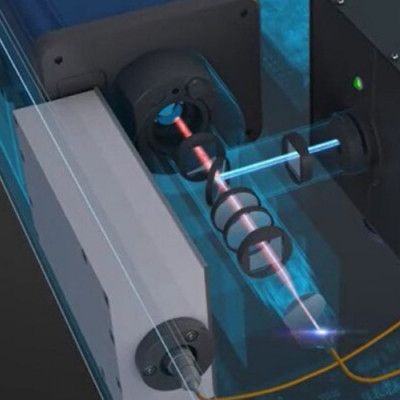
2021-03-01
Visited : 1407
Researchers have developed a unique material platform by using earth-rich lanthanide-doped upconversion nanoparticles and graphene oxide flakes that enables low-power optical writing nanoscale information bits.
The total amount of data generated worldwide is expected to reach 175 ZB (Zettabytes; 1 ZB equals 1 billion Terabytes) by 2025. If 175 ZB were stored on Blu-ray disks, the disk stack would be 23 times the distance to the Moon. We face the urgent need to develop storage technologies that can accommodate this enormous amount of data.
The demand to store ever-increasing volumes of information has resulted in the widespread implementation of data centers for Big Data. These centers consume massive amounts of energy (about 3% of global electricity supply) and rely on magnetization-based hard disk drives with limited storage capacity (up to 2 TB per disk) and lifespan (up to 3-5 years). Laser-enabled optical data storage is a promising and cost-effective alternative for meeting this unprecedented demand. However, the diffractive nature of light has limited the size of the information bits that can be reached and, as a result, the storage capacity of the optical disks.
Researchers at USST, RMIT and NUS have now overcome this limitation by using earth-rich lanthanide-doped upconversion nanoparticles and graphene oxide flakes. This unique material platform enables low-power optical writing nanoscale information bits (nanoscale refers to sizes of 1-100 nanometers, where one nanometer is one billionth of a meter). The result was published in the Science Advances journal.
A much-improved data density can be achieved for an estimated storage capacity of 700 TB on a 12-cm optical disk, comparable to a storage capacity of 28,000 Blu-ray disks. Furthermore, the technology uses inexpensive continuous-wave lasers, reducing operating costs compared to traditional optical writing techniques using expensive and bulky pulsed lasers.
This technology also offers the potential for optical lithography of nanostructures in carbon based chips that are highly required in next-generation nanophotonic devices.
Optical data storage has advanced remarkably over the last decades, but the optical disk storage capacity is still limited to a few Terabytes. The developed sub-diffraction optical writing technology can produce an optical disk with the largest storage capacity of all available optical devices.
While advances are needed to optimize the technology, the results open new avenues to address the global challenge of data storage. The technology is suited to the mass production of optical disks, so that the potential is enormous.
This ground-breaking technology could offer a cheaper and sustainable solution for the next generation of high-capacity optical data storage while enabling the energy-efficient nanofabrication of flexible graphene based electronics.
Read the original article on University of Shanghai for Science and Technology.